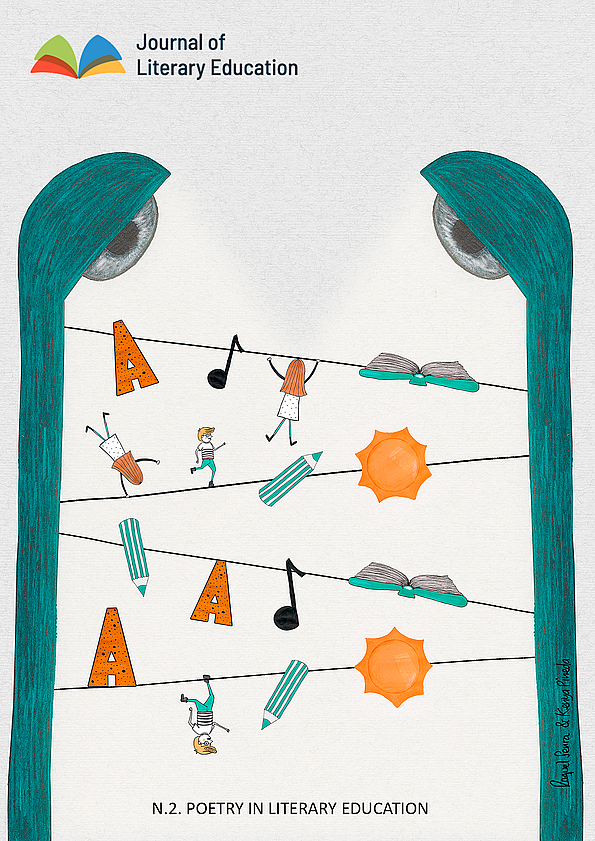The dialogic relationship between literary texts and paintings and its application to Literary Education in High School
DOI:
https://doi.org/10.7203/JLE.2.12779 Abstract
Abstract
The object of the present paper is the functional utilisation of the artistic image in the teaching of literature in Secondary Education. The proposal for the introduction of paintings to literary education is founded on Bakhtin’s principle of dialogism. The wider spirit of the theory of dialogism allows us to detach the literary text from the solitude of its autonomy, connecting it not only to other literary texts but also to other forms of art, which unfold within a particular historical and cultural context. One example of the dialogic relationship between literature and painting could be the dialogue between Kostas Karyotakis’ poem ‘We are just some…’ and Egon Schiele’s paintings, which was deployed in a teaching session for Greek eleventh graders. The teaching course, which is described thoroughly in the article, gave prominence to the dialogic relationship between the poetic text and the artistic images on a thematic, on a style and on a sociohistorical level. It also brought out the students’ role as active participants in the dialogue between the poem and the paintings and as crucial agents of the completion and the renewal of their meaning. This sample teaching has proven that the utilisation of the visual artwork material can be fully incorporated into the implementation framework of the current teaching methods of literature, can reignite pupils' own interest in the ideas and expressive ways of poetry and initiate them successfully into the fundamental issues of art in general.
 Downloads
Downloads
Downloads
Published
-
Abstract968
-
PDF798
Issue
Section
License
![]()
This work is licensed under a Creative Commons Attribution-NonCommercial-NoDerivatives 4.0 International License.
Authors who publish with this journal agree to the following terms: Authors retain copyright and grant the journal right of first publication with the work simultaneously licensed under a Creative Commons Attribution License that allows others to share the work with an acknowledgement of the work's authorship and initial publication in this journal. Authors are able to enter into separate, additional contractual arrangements for the non-exclusive distribution of the journal's published version of the work (e.g., post it to an institutional repository or publish it in a book), with an acknowledgement of its initial publication in this journal. Authors are permitted and encouraged to post their work online (e.g., in institutional repositories or on their website) prior to and during the submission process, as it can lead to productive exchanges, as well as earlier and greater citation of published work (See The Effect of Open Access).



